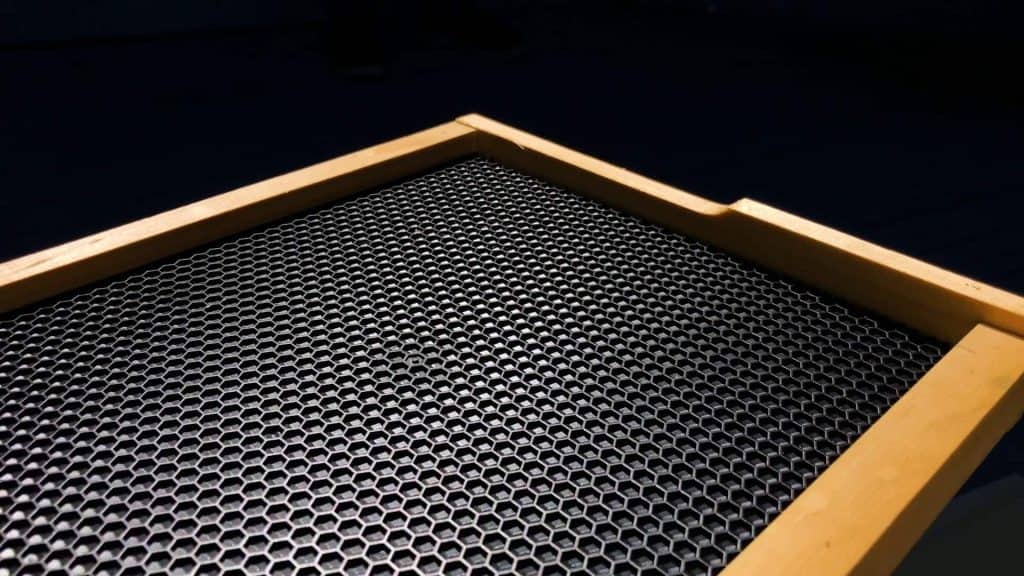There are various types of frame available for use in the brood box, and each beekeeper will have a preference for a particular type of brood frames. Some bee hives have wooden brood frames that can be used for foundation-less beekeeping, or made to accommodate wax and wire.
In this bee hives frame lesson, we will go over the pros and cons of each type of brood frame.
Wax & wire foundation frames

These were invented in Germany in 1857. They provide the bees with a structure onto which they draw their comb and (with conventional honey harvesting) allow the frames to be put into a centrifuge for honey extraction.
Wax foundation frames are wooden brood frames with wire threaded through. You put a wax foundation sheet across the wires and melt the wax onto the wires using a 12V power supply or car battery.
ADVANTAGES:
- Bees prefer wax foundation to plastic, and will usually start building comb quicker than on plastic foundation.
- The foundation ensures that the bees will draw straight comb.
DISADVANTAGES:
- Putting wax onto the wire frames takes a lot of time and effort.
- The introduction of wax from outside sources increases the chance of contamination. Much commercial wax contains traces of pesticides.
- Wax and wire frames force the bees to use a uniform cell size, which can have adverse effects on the health of the colony.
Plastic foundation frames

These can be wooden or plastic frames containing plastic foundation. The foundation is usually made from ABS plastic.
ADVANTAGES:
- Plastic frames are easier to install than wax and wire frames.
- They are also tough and durable.
DISADVANTAGES:
- You cannot cut honeycomb out of plastic foundation.
- Bees tend not to prefer plastic foundation and may be slow in building comb. You can add wax to the plastic foundation to encourage the bees to begin building comb.
- Using plastic foundation forces the bees to use a uniform cell size, which can have adverse effects on the health of the colony.
Foundationless frames

Foundationless frames allow the bees to draw their own comb. A comb guide helps the bees to draw their comb correctly.
ADVANTAGES:
- They are less expensive and quicker to prepare than other frames.
- You can cut out large sections of honeycomb from these frames.
- They allow the bees to build cells of varying sizes, which can improve the health of the colony.
- Avoids introducing wax from other sources into your hive, reducing the potential for contamination.
DISADVANTAGES:
- Naturally drawn comb can be fragile, and you need to be careful not to break it during handling and inspection.
- If your brood box is not level or if your frames are not set up properly, the bees may build their comb sideways across the frames (‘cross-combing’), which is difficult and time consuming to process.
By now, you should tell different types of brood frames with ease. We hope that you understand the pros and cons of each frames to choose the most suitable frames for your beekeeping hobby.
Originally posted 2020-08-20 17:14:42.


